On a summer’s evening in early June 2017, Ashley Heavyrunner Loring messaged some friends on Facebook, looking for a ride into town from her family’s ranch on the sprawling Blackfeet reservation in north-west Montana. As she waited for the friend to arrive, she grabbed some clothes, packed them into a blue string backpack and said goodbye to her grandmother. Then she ran outside to the waiting car.
Later that night, someone posted a short video of a party somewhere on the “rez”. In it was Ashley, then aged 20, nestled on a couch, surrounded by people drinking beers and chatting. At one point, Ashley messaged her older sister Kimberly, who was in Morocco visiting her fiance.
“Send me some muns [money], can you,” wrote Ashley.
“I wish I can sis but I’m in Africa,” Kimberly responded. “Are you okay?”
“Always.”
Days passed. Kimberly, 25, had since returned to the US, but Ashley’s phone wouldn’t pick up. Kimberly didn’t think too much of it; Ashley was always losing her mobile. And anyway, the sisters – who had grown up together wrangling horses, chopping wood and shoveling snow – had a plan. After months of living on the ranch and attending community college in the reservation’s down-and-out capital, Browning, Ashley would finally be joining her sister in Missoula, a bohemian university town where they would share an apartment and start a new life together.
But a week went by without a word from Ashley. By mid-June, when their father was suddenly hospitalised for liver failure, Kimberly panicked. Where was her sister? She made some phone calls.
That was when she discovered that no one had seen Ashley since the night of the party.
There is no single database that tracks the number of Native women who go missing or are murdered every year. But FBI figures show that Native Americans disappear at twice the per capita rate of white Americans – despite comprising a far smaller population. Last year, after more than two dozen Native Americans, most of them women, went missing in Montana alone, state senator Jon Tester declared the number of missing and murdered Indigenous women (MMIW) across America an “epidemic” and vowed to find solutions.
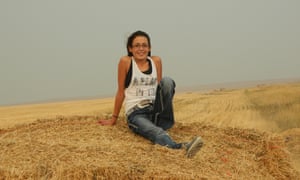
“People ask me: ‘Why are these women going missing? Is it the cartels?’” says cartographer Annita Lucchesi, a Southern Cheyenne descendant who is building the first ever US- and Canada-wide database devoted solely to missing and murdered indigenous women.
“It’s not the cartels – although that does happen – it’s the devaluation of Native women.”
Lucchesi points to the harrowing rates of sexual assault, murder and domestic violence suffered by Native women – some of the highest in America – as evidence. More than 84% will experience violence at some point in their lifetime, according to a 2016 National Institute of Justice report. One in three will be raped (compared to one in five white women), and 96% of all sexual violence suffered by Native women will be committed by non-Native men. In some counties, the murder rate of Native women is 10 times higher than for any other race in America, according to the Department of Justice.
Yet arrests and prosecutions are notoriously low, whether crimes against Native women are committed on the reservations or off them, says Lucchesi.
“I know people imagine this is something that happens mostly in Montana or North Dakota, but the thing I want to stress to people is that it happens everywhere. Some of the [places] that have the highest numbers [of MMIW] are actually liberal cities like Seattle, Portland and Denver,” she says.
“[When] you don’t see law enforcement holding up people who are accountable for hurting Native women, it becomes this culture where the only way anybody can ever see us is as victims and easy targets.”
When the Loring family reported Ashley missing to the Blackfeet reservation’s tribal police force, which, along with federal agents from the Bureau of Indian Affairs (BIA) serves as law enforcement to the sovereign nation, they were stunned by the response.
“No one took it seriously,” says Kimberly, shaking her head. “They just said: ‘She’s of age, she can leave when she wants to.’ When we talk to other families whose girls went missing, they say that’s what they got from law enforcement, too. It’s not a proper response.”
The reservation– a vast 1.5m-acre expanse larger than Delaware, bordering the Rocky Mountains to the west and Canada to the north – was usually flooded with gossip. But all had gone quiet after Ashley’s disappearance.
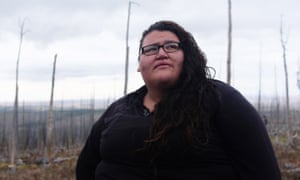
Then, in late June, the first lead came in – two weeks after Ashley was last seen. A young woman had been spotted running from a vehicle on a desolate stretch of Route 89, flanked on either side by swamp, dense forest and the occasional trailer. A three-day search party was organised by tribal police and the BIA, but came up empty. Volunteers found a grey sweater believed to be Ashley’s in a nearby dump, says Kimberly, but authorities misplaced it before they were able to do any testing. It would then take authorities two full months to launch a proper investigation into Ashley’s case, by which point the lead investigator had started a relationship with, and was leaking information to, a prime suspect, Kimberly claims.
“It was ridiculous. One of the [tribal] officers actually apologised to me. He said he was sorry about my sister and that he was working overtime on the case, but that nobody was taking it seriously,” she says. “People in Browning know exactly what happened to my sister and where she’s at, but they’re not speaking up because law enforcement ruined her case.”
Faced with the seeming indifference of the authorities, Kimberly took matters into her own hands, becoming her sister’s de-facto detective. She trekked up and down the mountains looking for clues, calling Ashley’s name, scrambling into rocky ravines, digging up fresh mounds of earth, analysing bones, chasing off grizzly bears. She followed every lead – many of them infuriatingly vague and horribly gruesome – and took every phone call, read every message, met anyone on the street who wanted to talk. She searched with friends, family, pet dogs and the occasional wildlife ranger – but often she was alone, armed with little more than bear spray and Camel Menthols.
“When a person goes missing, there isn’t a book that will tell you: ‘You need to do this and do that.’ You have to just learn it on your own,” sighs Kimberly. “Every day is a nightmare. We don’t know what really happened to her. There’s rumours about her being hurt and her body put places, being all cut up and scattered on the mountain.” She squeezes her eyes shut to stop the tears. “That’s why I search for her. That’s why I go out in the mountains and look. I don’t want my baby sister laying out there alone.”
It’s a concern that Matthew Lone Bear, an enrolled member of the Three Affiliated Tribes, knows well. His own sister Olivia, a 32-year-old mother of five, went out for a drink and game of bingo one night in October 2017 on the Fort Berthold reservation in North Dakota, then disappeared – along with the Chevy Silverado she had been driving.
“There was no big ol’ conspiracy. Everything was fine with her. Nothing was out of the ordinary,” he says. “But tribal PD [police department] were terrible,” he says. Instead of searching for her, “they just kept hoping she’d come home. They never had answers for us.”
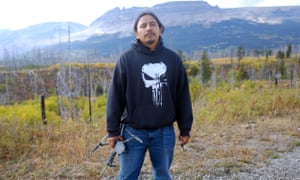
Like Kimberly, Lone Bear quickly realised he would have to step in where he believed the authorities were lacking. He moved back onto the reservation and set up a headquarters stocked with snacks and water bottles, mapped out the surrounding areas using land surveys, enlisted locals to man search parties, and set up an anonymous tipline and fundraising page.
When a donor finally purchased the DJI Phantom 3 drone on the search group’s Amazon wishlist, Lone Bear taught himself the basics and found his search strategy changed entirely.
“I thought we could cover a lot more ground with a drone,” he explains. “The Fort Berthold reservation is just shy of a million acres. And we got badlands, flats, farmland, a lot of private land, tribal land, army corps land … and it’s right in the middle of the Bakken [oil reserve], so that’s a lotta land to cover.” He clasps his hands together as he looks out, recalling the memory. “Law enforcement was tellin’ us we gotta hold hands and walk across a field [to search]. If you’re gonna deal with a million acres, there’s no dang way – you’re gonna be sittin’ there for the next 10 years!”
Lone Bear was meticulous in his approach to looking for Olivia. After creating a timeline of her last known movements, he logged every tip received – nearly 400 of them – and recorded every drone and foot search. Perhaps most crucially of all, he also drew up frequent press releases to keep Olivia’s case ever-present in the news.
“I spent a lot of time looking at these [missing persons] cases, and there are so many times where law enforcement really doesn’t investigate: they spend more time trying to make excuses why not to [search] than actually just getting out there and getting it done,” he says. “If you look across the United States at all the different reservations, even off reservation, when Native people are missing, they don’t get the same resources, and they don’t get the same type of [press] coverage, when white people are missing.”
Ten months after she was reported missing, Olivia’s body was found submerged in the Chevy Silverado at the bottom of a lake less than a mile from her house. In the end, it was a volunteer search team using sonar – not tribal, state or federal authorities – that were credited with finding her body.
The FBI is currently investigating the case. But the anguish and rage Lone Bear feels at not knowing what exactly happened to his sister have fuelled his desire to change the system. He is now drafting a missing person protocol that would help tribal governments “cut out the red tape” and streamline their approach so that “if a family calls for resources and resources ain’t comin’ in … some kind of emergency procedure” gets triggered, he says.
At the top of his to-do list was helping the Loring family. For three days in late September, he flew the Phantom 3 over Route 89 and other key search areas, looking into leads Kimberly had recently received, including one about an alleged beaver dam where Ashley’s body may have been laid to rest.
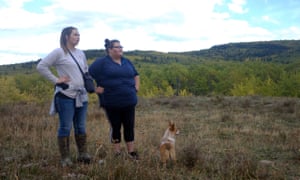
Lone Bear leaned against his Ford Explorer and toggled the drone down a steep ravine towards a creek. From above, the reservation was awash with colour and texture. There were the vast expanses of charred, blackened hills, the result of recent forest fires; narrow ribbons of road zigzagging towards the mountain tops; swamps glittering in the sunshine; tall Douglas firs, straight as soldiers; and long grasses flattened by sleeping bears.
As I joined Kimberly in searching on foot in the thick of it all, the drone buzzing high overhead, it became apparent that off every tiny trail, over every deserted rocky mountain path, lay evidence of not just human activity, but human detritus. Vodka bottles, beer cans, car keys, cigarette stubs, golf tees, stained T-shirts, clean shorts and smashed glass littered the earth. Everywhere, it seemed, was a party spot – and every party spot was a dumping ground.
“There’s party spots all over the reservation, a lot of ’em in the woods, in the mountains, out in the prairies,” states Blackfeet reservation police officer Isaiah Webber matter of factly, a thick wad of chewing tobacco jutting his lower jaw forward. “These kids, they grow up and they see their parents drinking a lot, partying, they see domestic violence in their home, and they’re left with that choice: ‘Well, my mom’s drinking, she’s too hungover to take me to school, so I’m just gonna drink, too.’”
Webber, an enrolled member of the tribe who served in Iraq and Afghanistan, is just one of 18 officers covering the reservation, an area so huge that by the time police have been alerted to a crime, the perpetrator has many times already fled the scene. Unemployment on the reservation hovers around 40%. Most of the force’s call-outs are alcohol-related, but meth and opioid use have also spiked recently, inflating both petty and violent crimes from break-ins to stabbings.
“We are undermanned,” Webber admits. “Even if you have a full shift of five officers, you still have to cover the whole reservation, all one and a half million acres. This is the most officers that Browning’s ever had, and we’re barely keeping up.”
Webber appears chagrined over Ashley’s disappearance. He logged multiple hours on the case, he says, following through on vague leads, many of them from self-proclaimed clairvoyants that ultimately led nowhere. One day, he found himself digging nearly 6ft into the ground after finding a fresh mound of earth obscured beneath a bridge. “It looked like it could’ve been a body,” he says. “But it was just a fire pit someone had covered up.”
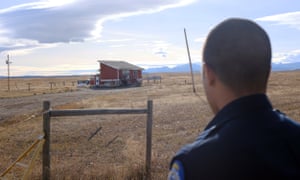
The Blackfeet people’s turbulent and often violent history at the hands of government authorities means that many locals are reluctant to come forward with any information – for fear that they will be somehow punished or get into trouble themselves, says Tana Fleury of the Blackfeet Domestic Violence Center. Fleury cites just a few US-government practices over the years that have instilled distrust: the forced placement of Native children in boarding schools (some parents who refused were imprisoned on Alcatraz); the forced sterilisation of Native women in the 1970s; the overrepresentation of Native children in foster care; and the disproportionately high incarceration rates of Native men and women across America (four times higher than white men, and six times higher than white women, respectively).
The result is that families lie low and mind their own business, says Fleury. “We don’t want to get involved. We don’t want to report it. It has everything to do with that historical trauma and seeing the police as [wielding] authority over us.”
Having failed to make any arrests regarding Ashley’s case, Webber knows that the tribal police department may be judged as having failed both the Loring family as well as the reservation. “It’s tough for the family to get closure,” he says. “It’s tough for the community, because they place their faith in us to bring people to justice, to uphold the law, to investigate these things. But the people who have seen her or the people who gave us information don’t want to talk; they don’t want to get themselves or whoever did it in trouble.”
He shrugs his shoulders and clasps his hands over his gun belt. “If someone won’t talk, they won’t talk, and it just becomes another cold case, another dead end, another statistic on this reservation.”
“Feisty” is the word friends and family use most to describe Ashley, a tiny, buoyant brunette standing at 5’2” (157cm) and weighing just 90lbs (41kg), but someone who knew how to stand up for herself. “She is strong – spiritually, emotionally, mentally, physically,” says Ashley’s best friend from childhood Erica Denney, 22, so upset by her disappearance that she mixes the present and past tenses to describe her. “She’d stick up for people. If someone was getting bullied or if she saw something that was wrong, she would come out and tell you.
“That’s why never in a million years would you think [it would be] Ashley. All of a sudden she’s just missing. She didn’t even get to see her 21st birthday … She had plans. She had goals. And someone took that from her.”
The lack of answers is driving Ashley’s family mad, says her father Roy Lee Heavyrunner, 47, a former firefighter who was in the hospital when she disappeared. “I used to just sit at the window and stare and scream,” he drawls, his speech slurring from a heavy cocktail of pain medications. “I fear she suffered something painful. Agonising. Horrible. My little girl.” He gazes out toward the battered houses lining his street, some of them boarded up with “Meth Unit” scrawled across in spray paint. Whoever had a hand in her disappearance is likely still on the reservation, he says, perhaps “someone I see every day”.
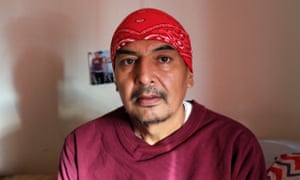
In December, Kimberly was invited by Montana senators Jon Tester, a Democrat, and Steve Daines, a Republican, to speak about Ashley’s case at a US Senate committee on the “silent crisis” of missing and murdered women in Indian country, a legal term referring to reservations and other Native lands where tribal and federal laws apply, but state laws do not. In Montana alone, Native women make up just 3% of the state population, but comprise 30% of all missing persons. Kimberly delineated the many ways in which she believed tribal and federal authorities had failed to perform their duties in regards to Ashley’s case.
“I am asking you to recognize that Indigenous women matter, and the way our missing and murdered women cases are handled needs to be corrected,” she said.
“We will no longer be the invisible people in the United States of America.”
In Canada, where Native women comprise just 4% of the total population but nearly 16% of all female homicide victims, a national inquiry was launched in 2016 after police racism was determined to have likely caused severe underreporting of MMIW cases. Its findings are due later this year. Speaking at the December hearing, Tester demanded an American reckoning.
“Where’s the problem?” he asked. “Is it with the BIA? Is it with the FBI? Is it with tribal law enforcement? Why are we not finding these people? We have got to find a solution to this.”
Tester has since introduced a bill requiring a federal investigation of each law enforcement agency’s jurisdiction over MMIW, as well as helped to reintroduce Savanna’s Act, a federal bill which would improve data collection related to MMIW cases as well as streamline communication between authorities.
The bill – named after Savanna Lafontaine-Greywind, 22, an enrolled member of the Spirit Lake tribe who was eight months pregnant when she was murdered and had her baby cut from her womb by a white neighbour – nearly passed last year but was blocked at the last minute by a single member of Congress. Along with the recent election of two Native women to Congress – in addition to the introduction of legislation aimed at addressing MMIW in at least seven states, among them Montana and North Dakota – some change may finally be afoot.
But activists have also pointed to a 40-year-old legal loophole as a target for reform. The 1978 US supreme court decision Oliphant v Suquamish ruled that tribes cannot arrest or prosecute non-Natives who commit crimes on Native land. In practice, this means that tribal police can arrest a Native man if he assaults a Native woman, but if that Native woman is assaulted by a non-Native, only a federal agent has authority. US attorneys then decide if they want to prosecute; but the latest figures show that federal prosecutors declined nearly half (46%) of all Indian country cases in 2016, many of them sexual assault cases.
“It’s a huge problem and incredibly complicated,” says Cherokee lawyer Mary Kathryn Nagle, who specialises in tribal sovereignty. “The US Congress and supreme court have created a legal framework that even attorneys with years of education and fieldwork can have disagreements over [in regards to] who has jurisdiction.”
In one well-known case, Nagle says, after a non-Native man tried to shoot his Native ex-wife (but shot her co-worker instead), six different authorities argued over whose jurisdiction the case fell under – and in the end resorted to using a tape measure and map to resolve it.
“We need the right to prosecute – we had it before and it’s been taken away from us,” says Nagle. “It’s well known that tribal governments can’t prosecute. And these men who want to commit crimes see this opportunity and seize it.”
Former North Dakota senator Heidi Heitkamp, who initially introduced Savanna’s Act to Congress, likens this jurisdictional black hole to a hunt in which non-Native men are the hunters and Native women the targets.
“When you don’t have prosecutions, you have no deterrents,” Heitkamp said at the December hearing. “And it’s open season on people who live in Indian country.”
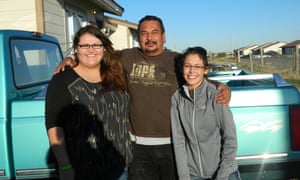
For now, Kimberly is happy that positive action is on the horizon. The visit to Washington allowed Ashley’s case to be properly heard for the first time since her sister went missing, she says. After a number of leads took investigators off the reservation and into other states, the FBI took over the case. And remarkably, the grey sweater she believes belonged to Ashley and was initially mislaid by authorities has also been found and is now being tested in a lab, she adds.
In a recent post on Facebook – where Kimberly often shares photos of her sister as well as the missing poster offering a $10,000 reward – Kimberly described the day in November 1996 when Ashley was born.
“I remember walking up to a bed with pink blankets and my mom saying: ‘Come meet your baby sister, Ashley.’ I looked at her, and at that moment I knew I would always love her. I knew I had to protect her and I would always stand up for her,” wrote Kimberly.
“My bond with my sister is so strong, no one can break it. My love for my Ashley has no limit that it allows me to stand up and never give up looking for her. I know if I was in her shoes, she would be fighting just as hard if not harder. She would be standing up demanding answers. My sister is a beautiful, intelligent young woman [who] has goals and dreams. Being a missing and murdered Indigenous woman was not one of them.”